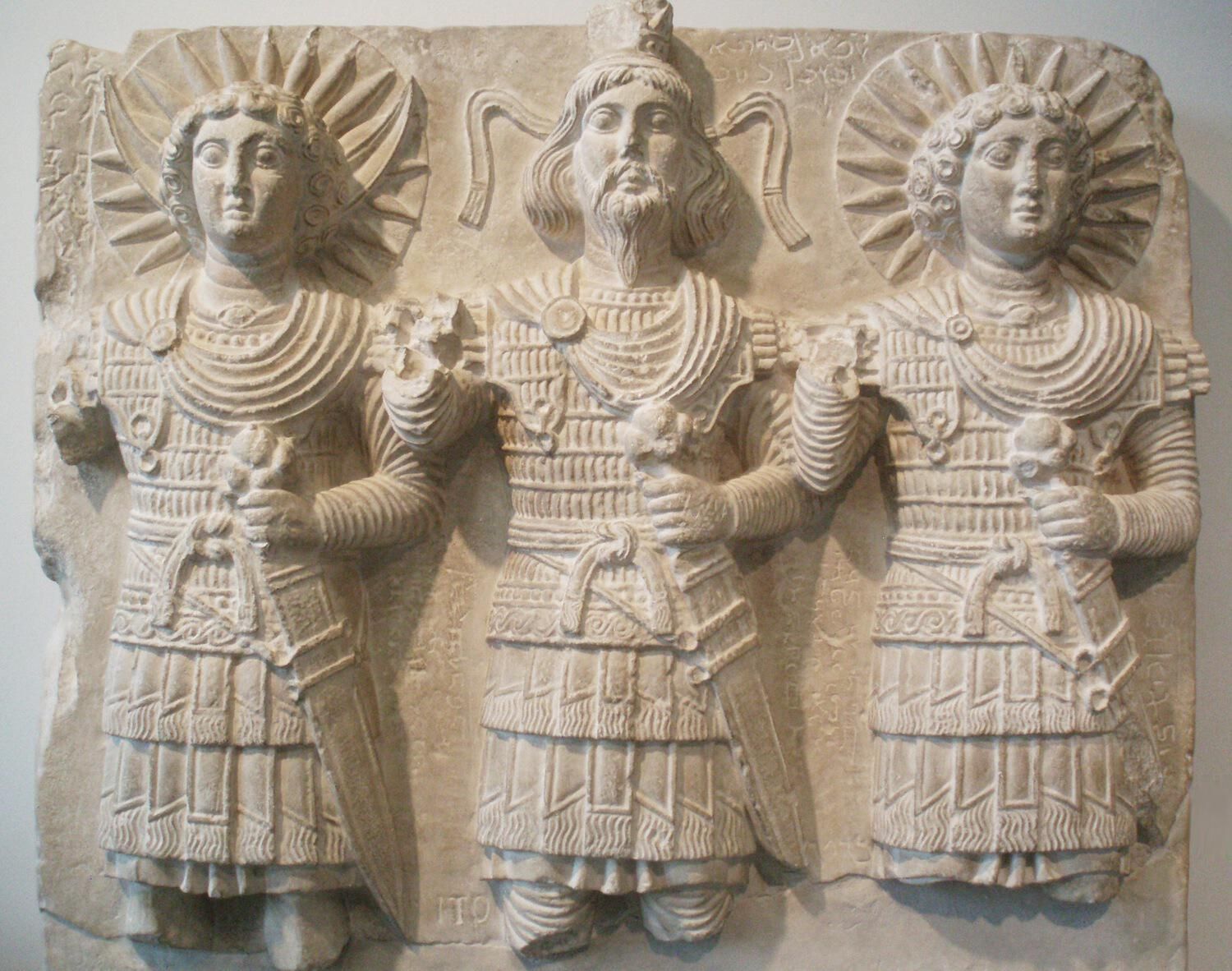The Divine Triad
Name/Title
The Divine TriadEntry/Object ID
79NE0528Description
Relief of three standing gods, facing front, in military garb with left hands on the hilt of their swords. Middle god is bearded, and all figures are missing their right arms and legs beneath the knees.Type of Sculpture
ReliefArtwork Details
Medium
PlasterContext
This stone relief is of particular interest in that the faces of the gods have been preserved intact, making the sculpture quite rare, since few depictions of the triad are known. The long, flowing hair of the central god is adorned with a calathos and a ribbon, in the Parthian style; he also wears Persian trousers. His beard indicates that he is Ba'alshamin, as opposed to Bel. He is flanked by two gods: beardless, bare-legged, with curly hair, their heads are surrounded by radiant halos. These are the lunar god Aglibol, on the left, identifiable by his lunar crescent, and the sun god Malakbel, on the right. The relief was discovered near Palmyra, where Ba'alshamin's temple was second in importance only to the temple of Bel. Aglibol and Malakbel, gods of the traditional pantheon, also had a common temple there. The triad was formed through the association of two old gods of the Palmyrene religion with the supreme god. This sculpture is the most significant and oldest known depiction of the triad of Ba'alshamin. The three standing gods wear tight-sleeved tunics and are depicted in military garb: lamellar cuirasses and Roman cloaks fastened at the right shoulder with fibulae. They grasp the hilts of their swords with their left hands, while their right hands, now missing, possibly gripped spears or scepters. In Syria a host of divinities were represented in military garb. The lamellar cuirass was inspired by Oriental Hellenism. Its style predates the Roman muscle cuirass, which replaced the Hellenistic cuirass during the first century AD. This triad was the product of an official belief system, and its various sources of inspiration-Parthian, Hellenistic, and Roman-exemplify vividly the original and hybrid art of Palmyra.Made/Created
Date made
1 CE - 200 CETime Period
Roman ImperialEthnography
Culture/Tribe
Near Eastern - Palmyrene

